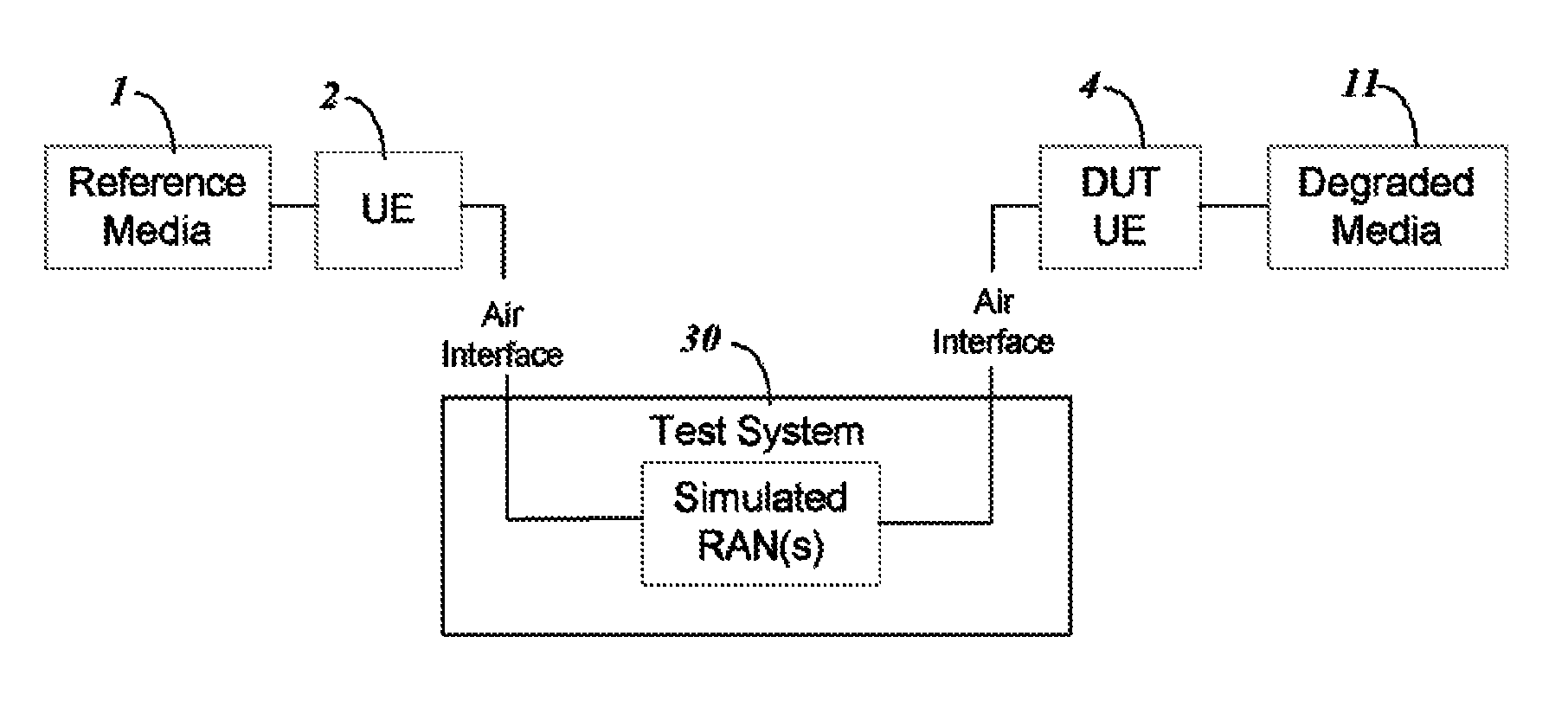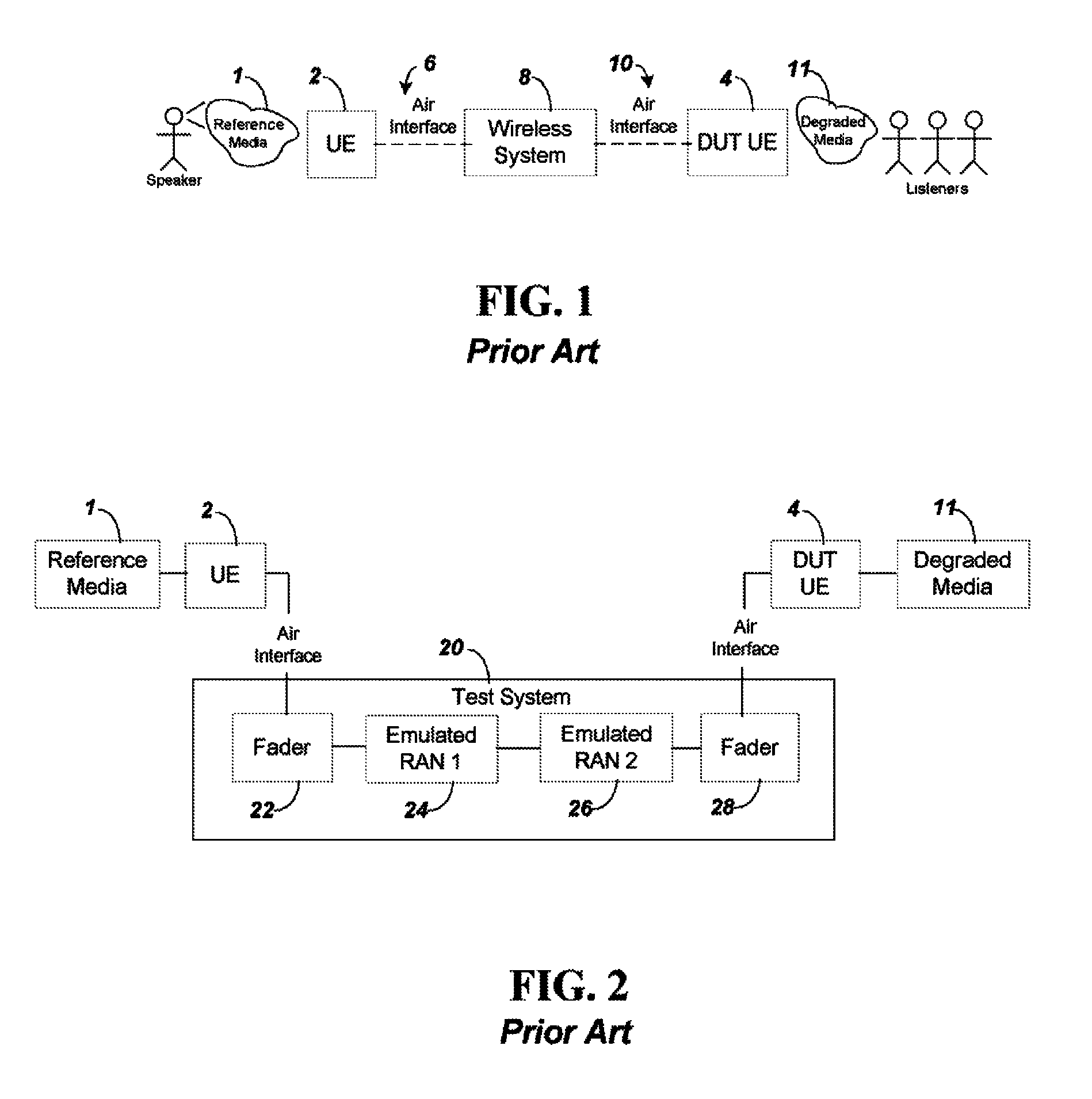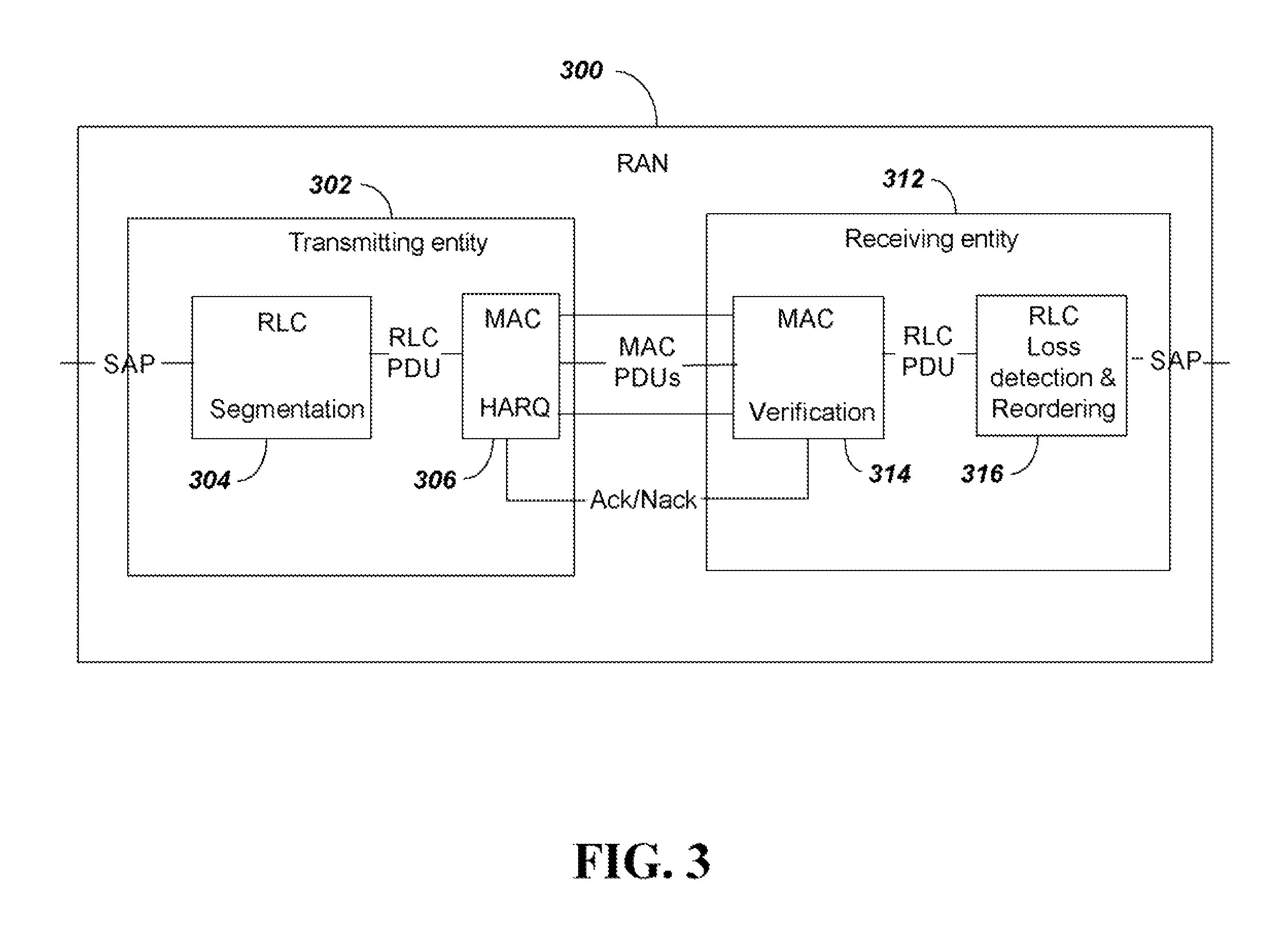Impairment simulation for network communication to enable voice quality degradation estimation
a network communication and impairment simulation technology, applied in the field of impairment simulation, can solve the problems of packet loss, packet delay, packet loss fluctuation, packet error, etc., and achieve the effect of reducing the number of people listening
- Summary
- Abstract
- Description
- Claims
- Application Information
AI Technical Summary
Benefits of technology
Problems solved by technology
Method used
Image
Examples
Embodiment Construction
[0039]FIG. 3 shows components of a RAN 300 to illustrate signals that are transmitted and received over a typical LTE network. The system of FIG. 3 will enable a subsequent explanation of how a server computer in the test system according to the present invention can manipulate the signals to simulate noise and jitter. FIG. 3 illustrates the operation of various protocol layers that impact voice quality in an LTE RAN. For simplicity it only shows the Radio Link Control (RLC) layer and the Media Access Control (MAC) protocol layers.
[0040]For a source RAN, the transmitting entity is the source UE and the receiving entity is the base station. In the target system those roles are reversed. Only operation in Unacknowledged RLC Mode (UM) will be discussed, since that mode is typically used for voice and video. Details of the MAC and RLC operation can be found in 3GPP Technical Specification (TS) 36.321 and TS 36.322 respectively.
[0041]The transmitting entity 302 receives data at a Server ...
PUM
 Login to View More
Login to View More Abstract
Description
Claims
Application Information
 Login to View More
Login to View More - R&D
- Intellectual Property
- Life Sciences
- Materials
- Tech Scout
- Unparalleled Data Quality
- Higher Quality Content
- 60% Fewer Hallucinations
Browse by: Latest US Patents, China's latest patents, Technical Efficacy Thesaurus, Application Domain, Technology Topic, Popular Technical Reports.
© 2025 PatSnap. All rights reserved.Legal|Privacy policy|Modern Slavery Act Transparency Statement|Sitemap|About US| Contact US: help@patsnap.com



